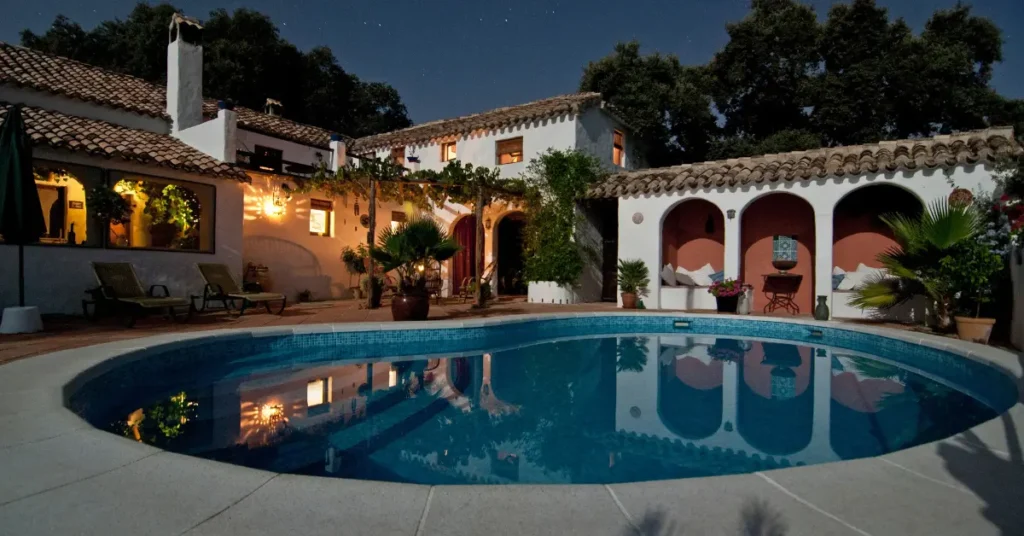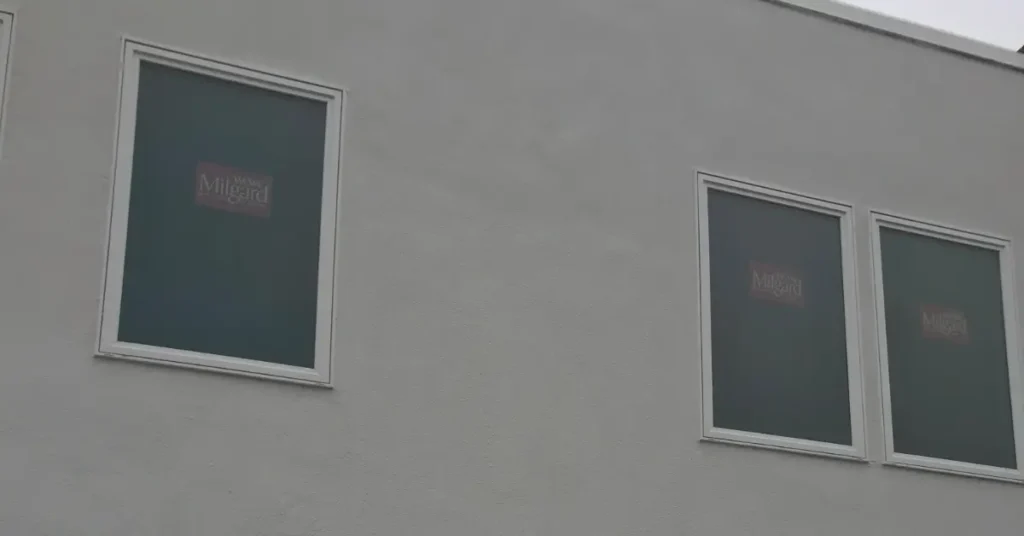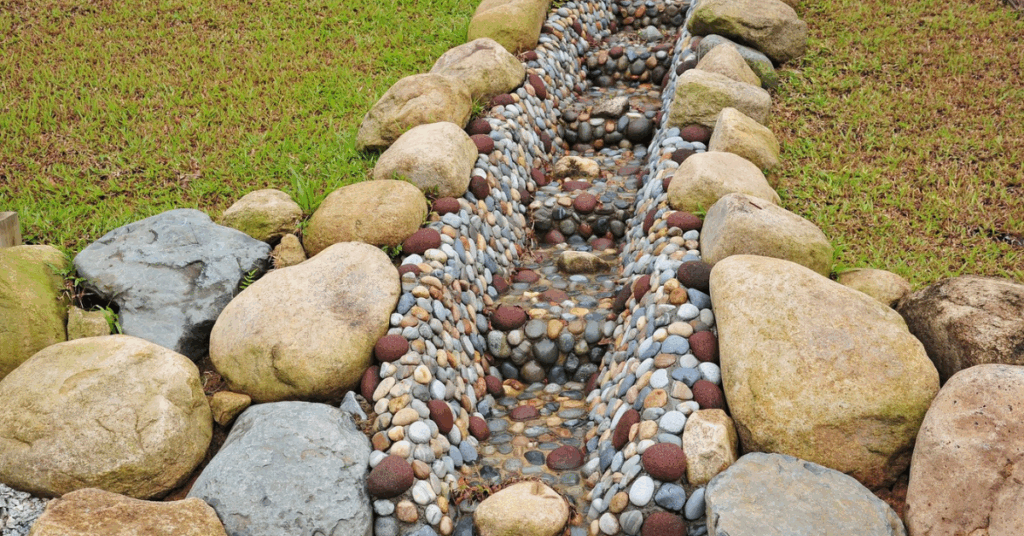Concrete staining stands out as a remarkable strategy for enhancing the aesthetic appeal of a concrete deck. With its rich, vibrant colors that boast longevity, it’s no surprise that this technique is favored by many. Its versatility shines through as it suits indoor and outdoor concrete surfaces.
But painting concrete is more than just pretty to look at. It also has a practical use: it’s a great way to hide imperfections in your concrete surfaces. With various application methods, you can change a lot of different places, from adding a touch of elegance to your concrete patio to giving your concrete garage floor a splash of color. Basically, staining concrete is your ticket to turning the usual into the extraordinary.
Concrete painting is a clever way to turn a plain concrete floor into a surface that is beautiful, elegant, and full of life. When you stain concrete, you can get a wide range of attractive finishes like polished marble, tanned leather, or even natural stone. This makes coloring concrete very versatile. In this in-depth guide, we’ll review the basic concrete coloring techniques to turn an ordinary concrete surface into something special.
What is Concrete Staining?
So, you may wonder, what exactly is this “concrete staining” everyone’s talking about? Well, let me paint you a picture.
Concrete staining is your pocket-friendly, go-to solution when you’re looking to ramp up the visual charm of a concrete surface. Think of it as a beautifying spa treatment for your concrete floor – it’s all about rejuvenating that tired-looking surface.
The process involves a well-crafted, water-based solution carefully poured onto a sparkling-clean concrete surface. But here’s where the magic happens – instead of sitting idly on the surface, this solution seeps deep into the concrete’s pores. This isn’t just a surface-level makeover, my friends. No, this profound, lasting transformation becomes an unshakeable part of the concrete surface.
So, in the end, you have a rejuvenated concrete surface dressed up in a new vibrant tone that’s not going anywhere anytime soon. Concrete staining is a durable, appealing solution that ensures your surfaces stay in vogue year after year.
What are the type of Concrete Staining?
There are primarily two types of concrete staining, each with its own unique attributes and benefits. Let’s explore them:
Acid-Based Concrete Stains
Acid stains penetrate the concrete surface and react chemically with the cement. This reaction deposits metallic salts, creating a marbling effect, leading to rich, earth-toned colors. These hues typically range from soft blue-greens to deep, warm browns. The unique thing about acid stains is that the resulting color pattern is always one-of-a-kind, given the chemical reaction at play. It’s a fantastic choice if you’re aiming for a natural, stone-like appearance.
Water-Based Concrete Stains
Water-based stains are non-reactive. They work by depositing pigment into the concrete’s pores. These stains provide a wider array of color choices and more predictable color patterns than acid stains. With water-based paints, you can achieve anything from subtle hues to bright and bold colors, making it an excellent choice to get creative or match specific color schemes.
The type of concrete staining you choose depends on the desired look and feel of your concrete surface. Whether you’re after a natural, earthy finish or a more vibrant, customized color, there’s a staining technique to match your vision.
The Value of Concrete Staining
Before we delve into concrete staining techniques, let’s understand why this process is worth considering. Concrete staining does not merely change the appearance of your concrete floor but also enhances its durability and resistance to stains and water. A well-stained concrete floor will be easier to maintain and will last longer, thus making it an economical choice in the long run.
Acid-Based Stain Technique
The Acid-Based Stain Technique is a popular method of staining concrete due to its unique, natural-looking results. This technique leverages the reaction between the stain – which contains metallic salts – and the lime present in the concrete. The resulting colors and patterns are generally rich and variegated, mimicking the look of polished marble, weathered leather, or even natural stone.
The Chemistry Behind Acid-Based Staining
Acid-based stains create a lasting bond with the concrete by initiating a chemical reaction. The stain contains metallic salts that react with the lime in the concrete, creating unique, mottled patterns and rich, earth-toned colors, such as tans, browns, terra cottas, and soft blue greens.
Here’s a rundown of the basic steps involved in the Acid-Based Stain Technique:
- Surface Preparation: First and foremost, the concrete surface must be cleaned thoroughly. This ensures it is free from dirt, oil, grease, or any other contaminant that might hinder the staining process. This step may involve power washing or scrubbing the surface and sometimes using a concrete etcher for a more porous surface.
- Stain Application: The acid stain is applied to the concrete surface. It can be sprayed, rolled, or brushed on, but the key is to ensure an even application. Uneven application may result in blotchy or discolored areas.
- Reaction Time: The acid stain then needs time to react with the concrete, usually anywhere from a few hours to overnight, depending on the desired depth of color.
- Neutralizing and Cleaning: Any residual stain must be neutralized and cleaned after the reaction time. This is typically done using a mixture of baking soda and water. This step halts the chemical reaction and cleans the surface, prepping it for sealing.
- Sealing: The final step involves applying a concrete sealer. The sealer acts as a protective layer, enhancing the stain’s longevity and the surface’s overall appearance.
It’s worth noting that safety should always be a priority when dealing with acid stains. They are corrosive, and it’s recommended to use protective eyewear, gloves, and appropriate clothing during application. Acid-based stains are beautiful, durable, and unique as each application is distinct, providing your concrete surface with character and life.
Water-Based Stain Technique
Like the Acid-Based Stain Technique, the Water-Based Stain Technique is another way to add color and style to your concrete surfaces. Unlike acid stains, water-based stains don’t rely on a chemical reaction to impart color. Instead, they use water-soluble pigments that penetrate the porous concrete and deposit color.
The Versatility of Water-Based Staining
Unlike acid-based stains, water-based stains don’t react chemically with concrete. Instead, they penetrate the porous surface and deposit their pigments. Water-based stains are available in a wider range of colors, allowing for more creativity and customization.
Here are the basic steps involved in the Water-Based Stain Technique:
- Surface Preparation: The process starts with thoroughly cleaning the concrete surface. Any dirt, oil, or contaminants need to be removed to allow the stain to penetrate evenly into the concrete.
- Stain Application: The water-based stain is then applied to the surface. This can be done using a sprayer, brush, or roller. The goal here is to ensure an even and uniform application to avoid streaks or blotchy areas.
- Drying Time: Once the stain is applied, it needs time to dry and allow the color to penetrate fully into the concrete. Drying time can range from a couple of hours to a full day, depending on the product and environmental conditions.
- Sealing: The last step is to apply a sealer. A sealer locks in color and adds a layer of protection to the stained concrete, enhancing its durability and making it more resistant to wear and tear.
Water-based stains come in a broader range of colors than acid-based stains, providing more flexibility in color selection and design possibilities. They are also generally safer and easier to work with, making them popular for indoor and outdoor applications. Whether you’re aiming for a subtle enhancement or a bold transformation, the Water-Based Stain Technique can help you achieve your desired look.
How to Choose the Right Technique for Your Concrete Surface
Choosing the proper staining technique for your concrete surface can feel daunting, especially with various options available. However, the choice essentially boils down to your project’s specific requirements, the look you aim to achieve, and the condition of your concrete. Here are some key factors to consider:
- Desired Appearance: Acid-based stains typically produce rich, earthy tones and a marbled, variegated effect, resembling natural stone. This technique’s outcome is more unpredictable due to the unique chemical reactions occurring with each application. On the other hand, water-based stains offer a broader color palette, ranging from subtle to vibrant hues. The colors are more uniform and predictable, offering more control over the final appearance.
- Condition of the Concrete: The current condition of your concrete can influence the choice of stain. Acid-based stains work well on older, more worn concrete as they react with the lime in the concrete. On the contrary, water-based stains are an excellent choice for new, smooth concrete, providing a uniform color across the surface.
- Location of the Concrete Surface: If the concrete surface is outdoors and exposed to elements like sunlight, acid-based stains might be more durable due to their UV resistance. However, water-based stains can work beautifully for indoor surfaces or areas less exposed to harsh conditions.
- Safety and Environmental Considerations: Acid-based stains can be hazardous and require safety measures during application. They also contain compounds that might be harmful to the environment. If safety and environmental concerns are significant factors for you, water-based stains, being less corrosive and more environmentally friendly, might be the better option.
Remember, there’s no one-size-fits-all solution when it comes to concrete staining. Take the time to consider these factors, weigh the pros and cons of each staining technique, and choose the one that best fits your project’s specific needs and your personal preferences. Whatever choice you make, a well-executed stain can turn your concrete surface into a stunning piece of art that’s as durable as beautiful.
Need To Know More About Concrete Staining?
In wrapping up our comprehensive guide, “The Basic Concrete Staining Techniques: An In-Depth Guide,” we hope that we’ve equipped you with a solid understanding of the critical concrete staining techniques and how to choose the one that best suits your project’s requirements. Remember, the world of concrete staining is comprehensive and varied, and navigating it might sometimes feel overwhelming.
However, you’re never alone in this journey. If you are unsure or need further assistance understanding the basics or even mastering the advanced aspects of concrete staining, please contact us at Rhino Builders. We’re always ready and eager to provide further information and share our knowledge on concrete staining techniques.
We are one of the top-rated concrete staining contractors in the San Francisco Bay Area and Livermore, CA. We are committed to ensuring your project’s success. Our team of professionals is always ready to provide comprehensive guidance, share more sophisticated techniques, and impart in-depth knowledge about concrete staining.
Trust our expertise, and let us guide you through this exciting journey. Your concrete surface deserves nothing but the best, and with Rhino Builders, that’s precisely what you’ll get.
Our team at Rhino Builders is committed to guiding you through every step of your concrete staining project, ensuring a result that’s as stunning in appearance as it is lasting in durability. Reach out today, and let’s create something beautiful together.







